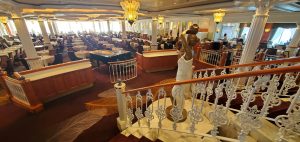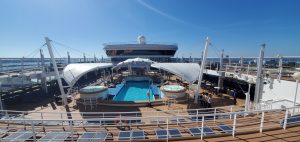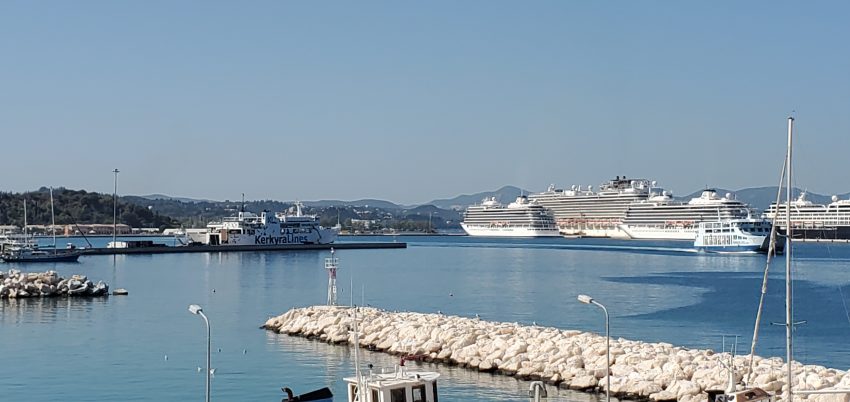There is an old adage that states “size doesn’t matter”. I’m not sure what it originally applied to but the current utilization is wide spread. The question is, does it apply to cruise ships? More and more lines are introducing mega ships, behemoths at sea that can carry more passengers and offer more activities. Is that the way to go? Let’s consider the pros and cons of the big ships versus their smaller sisters.
The big ships offer the more traditional back and forth itineraries that cover the most common ports, whether it is in the Caribbean or the Mediterranean. These big ships cannot fit into the smaller ports so their itineraries are limited and may suffer. You will be arriving in the most popular ports along with thousands of others, with ship excursions fully booked and private excursions harder to come by. Of course if you are looking for a “cruise to no where”, or plan to stay on board most of the time, this is ideal for you.

They are larger thus less intimate, so if you are not a people person it is easier to disappear into the crowd. The layout of the ships seems more complex so it may be harder to find everything you need right away. There are more venues available so you can find the restaurant or bar that suits your tastes. Big ships offer the bigger shows, production numbers and even Broadway style plays with multiple showings each night or over a couple of nights. An eclectic mix of music will be offered for your listening pleasure at each of the different venues as well, or you can just find a quiet corner to relax.
On bigger ships each of the public areas are divided into smaller spaces such as the main pool, family pools, water slides, etc. If you are travelling as a family then there are more areas and events geared to children. There will be arcades, kid’s clubs and pools specifically designed for every one from the littlest to the teens, with planned family activities such as scavenger hunts, balloon animals and movies hosted by the crew. If you want to avoid children then the bigger ships will have adult only areas as well.

On the flip side the smaller ships offer a variety of itineraries, some only once a year and to the farthest reaches of the globe such as the Antarctic and Middle East. The smaller ships are easier to navigate from deck to deck so you won’t get lost. There are fewer venues for food and drink, even though the caliber is consistent. The shows will vary in quality and often will not be the extravagant production numbers that the bigger ships can support.
Since the itineraries are so varied they do attract a different type of cruiser; usually mature, regular cruisers who are probably retired or close to it, with families a rarity. They ships are more intimate so you will run into the same people over and over again, which is great for building a circle of friends.

Smaller ships do not have the space to support water slides, race tracks or bowling alleys. However the daily activities will be varied throughout the cruise (we did a murder mystery on one cruise) and the smaller ships are more open to passenger lead activities such as crafter’s circles or line dancing classes.
I spoke to a Cruise Next officer to get their perspective. David had been on a number of different ships but said he preferred the smaller ones. He noted that more time with his clients, meeting more seasoned cruisers and the variety of the longer and more unique itineraries as his reasons why. He indicated that the passengers were more likely to book back to back cruises on the smaller ships because of the unique, one pass only itineraries. This allowed the passengers and the crew to get to know each other better. And with a smaller crew overall, the crew themselves were closer to each other.

Whether you book your next cruise for the itinerary, the ship, the price or the time of year, be sure to find the one that’s right for you. And if you aren’t sure yet, book a few more!
